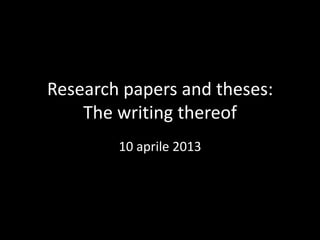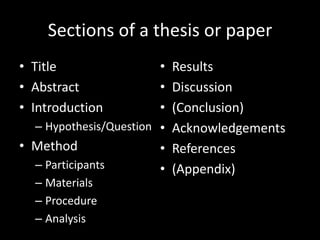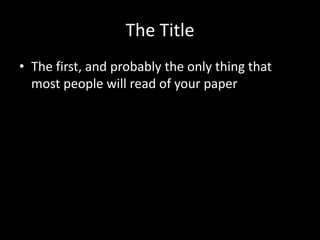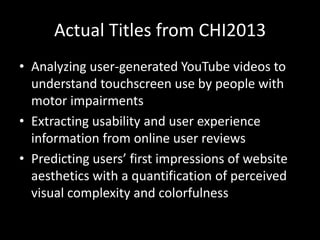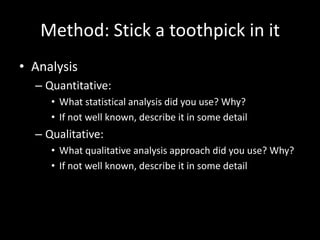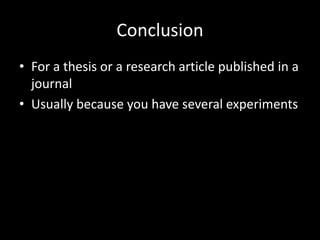This document provides an overview of the typical sections in a research paper or thesis and guidance on how to write each section effectively. It discusses the purpose and content for sections like the title, abstract, introduction, methods, results, discussion, and conclusion. The document also reviews tips for strong writing like rewriting and getting feedback from others. Overall, it aims to help readers understand what should be included in a research paper and how to structure and tell a compelling story through their writing.
